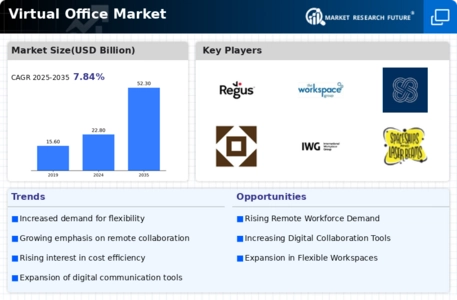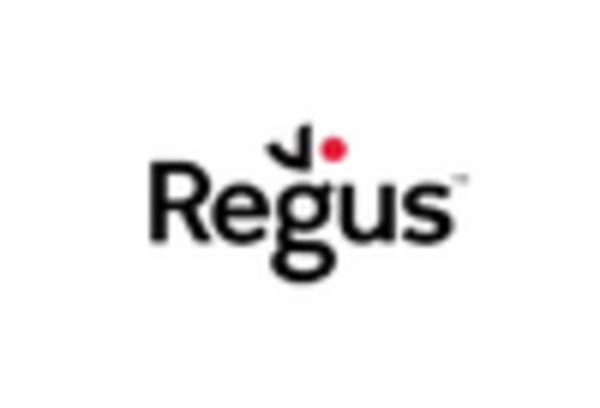Rise of Remote Work Culture
The rise of remote work culture appears to be a pivotal driver for the Virtual Office Market. As organizations increasingly adopt flexible work arrangements, the demand for virtual office solutions has surged. According to recent data, approximately 70% of employees express a preference for remote work options, which has led companies to seek innovative solutions that facilitate collaboration and communication. This shift not only enhances employee satisfaction but also allows businesses to reduce overhead costs associated with physical office spaces. Consequently, the Virtual Office Market is likely to experience sustained growth as more companies recognize the benefits of remote work and invest in virtual office solutions to support their workforce.
Increased Focus on Sustainability
An increased focus on sustainability is emerging as a significant driver for the Virtual Office Market. Companies are increasingly recognizing the environmental impact of traditional office spaces, leading to a shift towards more sustainable practices. Virtual offices contribute to reduced carbon footprints by minimizing the need for commuting and lowering energy consumption associated with physical office buildings. Recent studies suggest that businesses adopting virtual office solutions can reduce their overall environmental impact by up to 30%. This growing awareness of sustainability is likely to propel the Virtual Office Market forward as organizations seek to align their operations with eco-friendly practices.
Globalization of Business Operations
The globalization of business operations is a crucial driver for the Virtual Office Market. As companies expand their reach across borders, the need for flexible and scalable office solutions becomes paramount. Virtual offices provide businesses with the ability to establish a presence in multiple locations without the constraints of physical office spaces. This flexibility allows organizations to tap into new markets and access diverse talent pools. Recent trends indicate that nearly 60% of businesses are considering virtual office solutions to support their international operations. As globalization continues to shape the business landscape, the Virtual Office Market is likely to thrive, catering to the evolving needs of companies operating on a global scale.
Cost-Effectiveness of Virtual Solutions
The cost-effectiveness of virtual solutions is a compelling driver for the Virtual Office Market. Businesses are continually seeking ways to optimize operational costs, and virtual offices present a viable solution. By eliminating the need for physical office space, companies can significantly reduce expenses related to rent, utilities, and maintenance. Data shows that organizations utilizing virtual office services can save up to 50% on overhead costs compared to traditional office setups. This financial incentive is likely to attract more businesses to the Virtual Office Market, as they aim to enhance profitability while maintaining operational efficiency.
Advancements in Communication Technology
Advancements in communication technology significantly influence the Virtual Office Market. The proliferation of high-speed internet, cloud computing, and collaboration tools has transformed how businesses operate. These technologies enable seamless communication and collaboration among remote teams, making virtual offices a viable alternative to traditional workspaces. Data indicates that the use of video conferencing tools has increased by over 200% in recent years, underscoring the growing reliance on digital communication. As businesses continue to embrace these technological advancements, the Virtual Office Market is poised for expansion, driven by the need for efficient and effective communication solutions.


















Leave a Comment